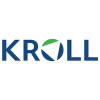Kroll: Higher for Longer? Cost of Capital in the Current Environment
In 2022, global equity markets saw their worst performance since the onset of the global financial crisis of 2008. A surge in global inflation, Russia’s war on Ukraine and aggressive interest rate hiking policies by major central banks, created new pockets of uncertainty for markets and the global economy. While equity markets have recovered most of their losses in 2023, there is still uncertainty on whether the Fed will achieve a soft landing for the U.S. economy, as it continues its attempt to get inflation down to its 2.0% target. Other major central banks are facing similar headwinds. This means that companies are now facing a higher cost of capital that matches the levels last seen during the 2008-2009 global financial crisis.
Learning Objectives
- Compare performance by global financial markets in 2022 versus YTD 2023
- Discuss the impact of the Fed’s September monetary policy meeting on financial markets and what this means for the U.S. and the global economy
- Recognize the latest trends in safe-haven government bond yields and associated monetary policy by other major central banks
- Examine the latest real GDP growth forecasts for major geographies and how economic activity is being impacted by the current interest rate environment
- Identify economic indicators and financial market risk factors that impact Kroll’s U.S. and eurozone equity risk premium recommendations
- Determine the best- and worst-performing U.S. industries in 2023 and how industry betas have been affected
- Review country risk premium trends, with a focus on some of the countries most impacted by high inflation and rising interest rates

